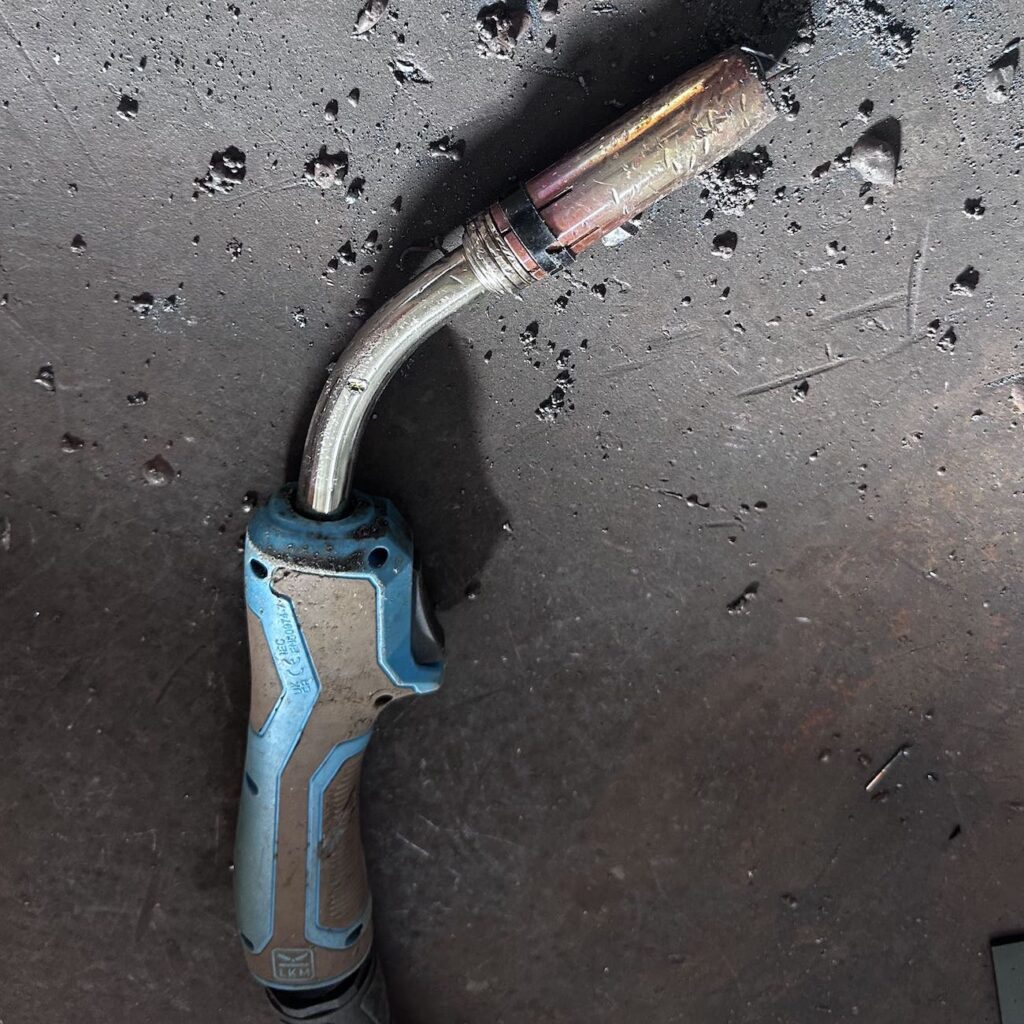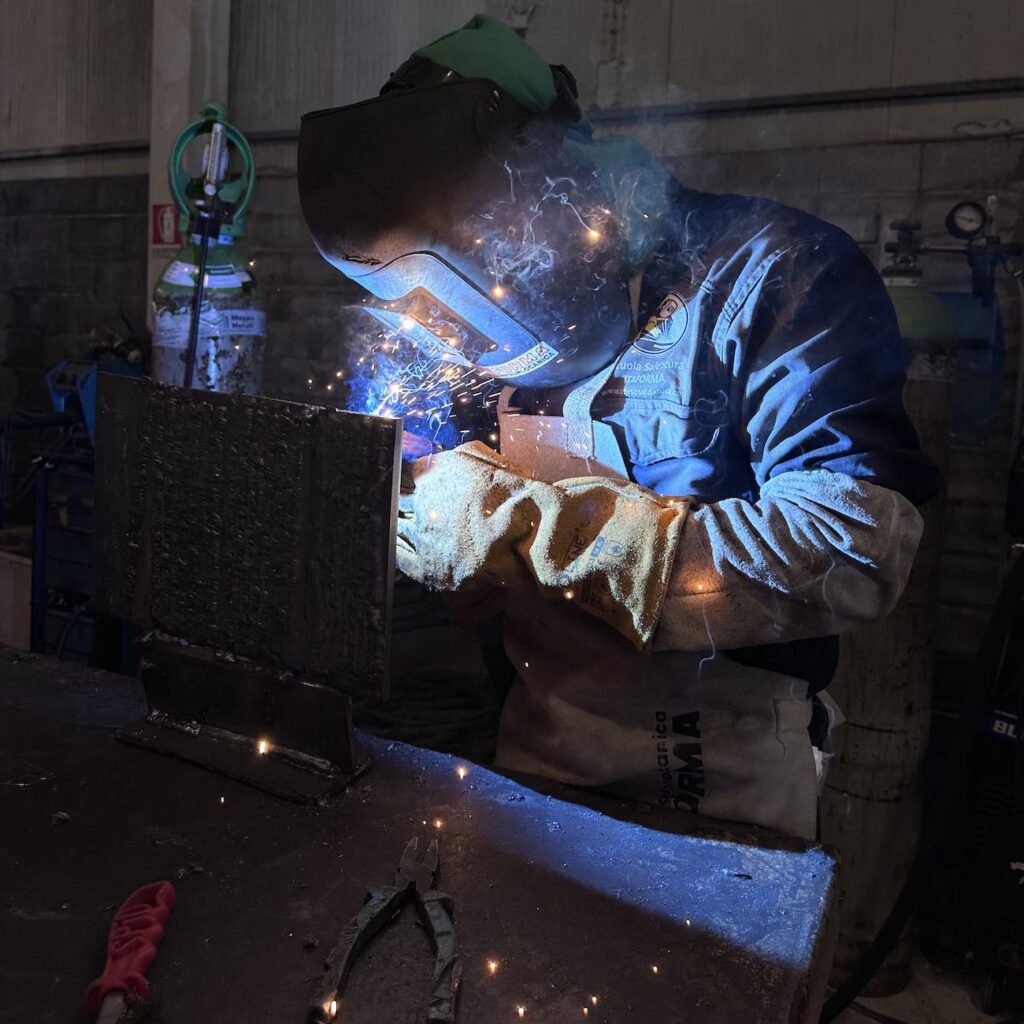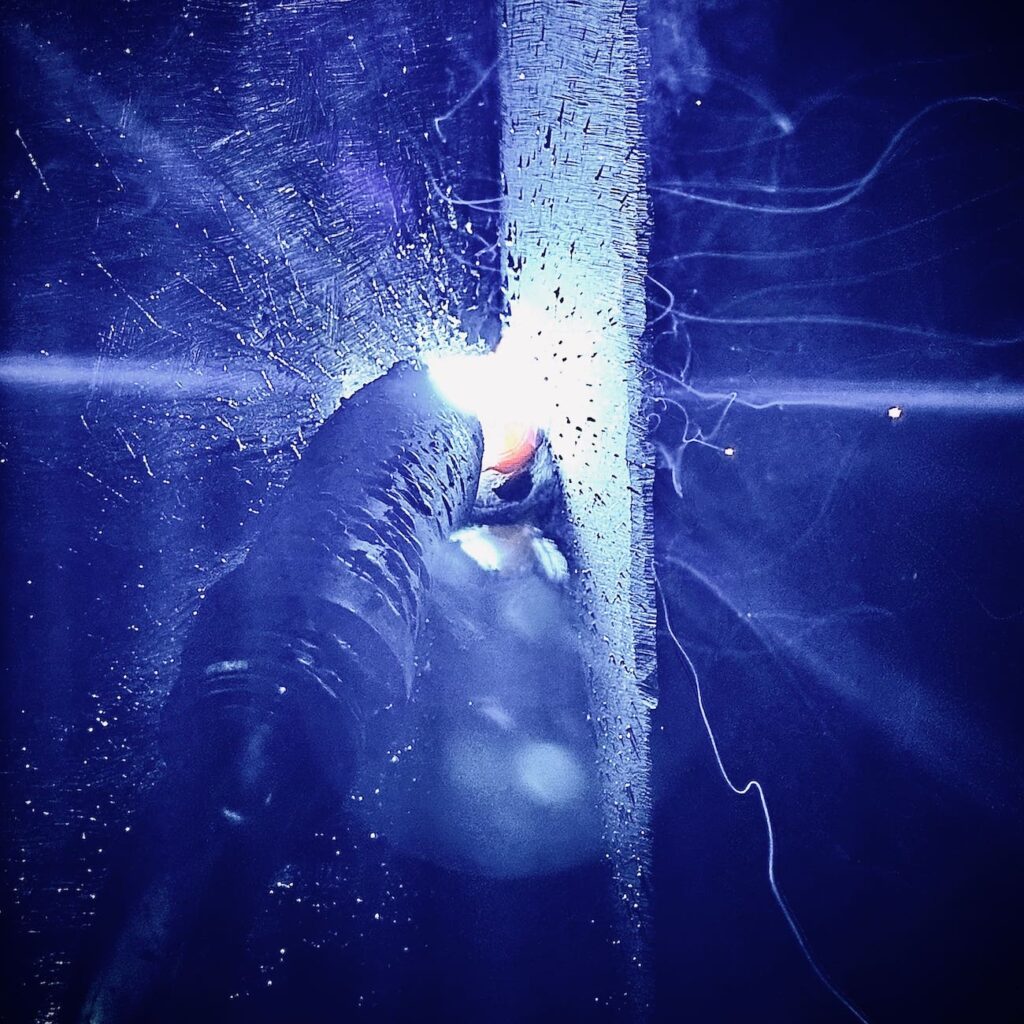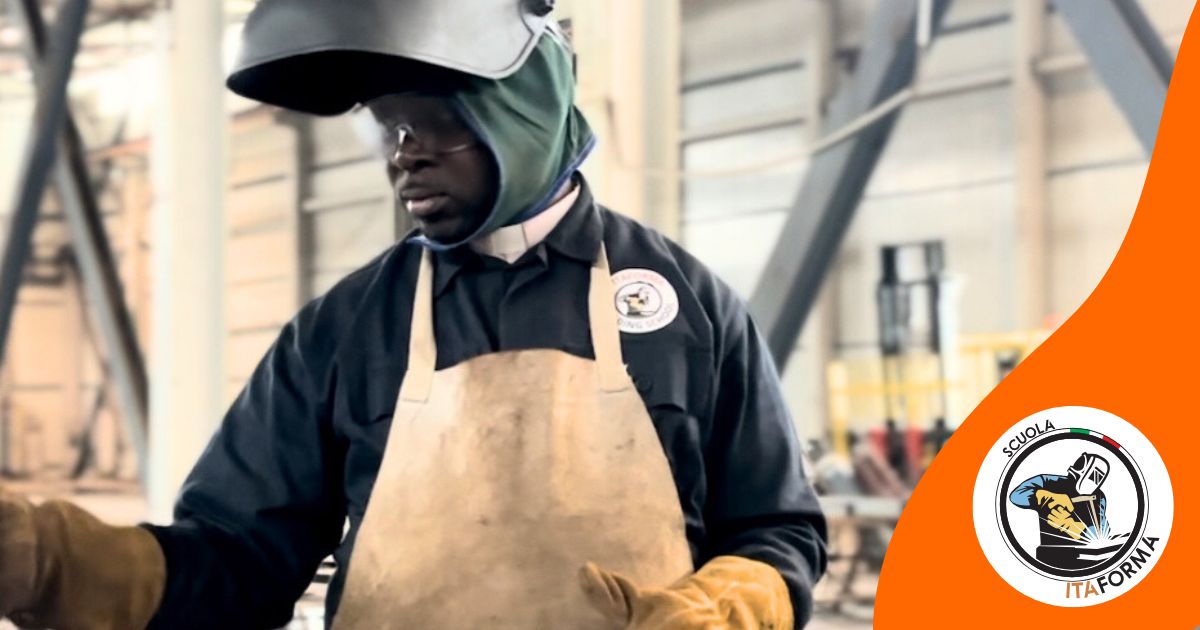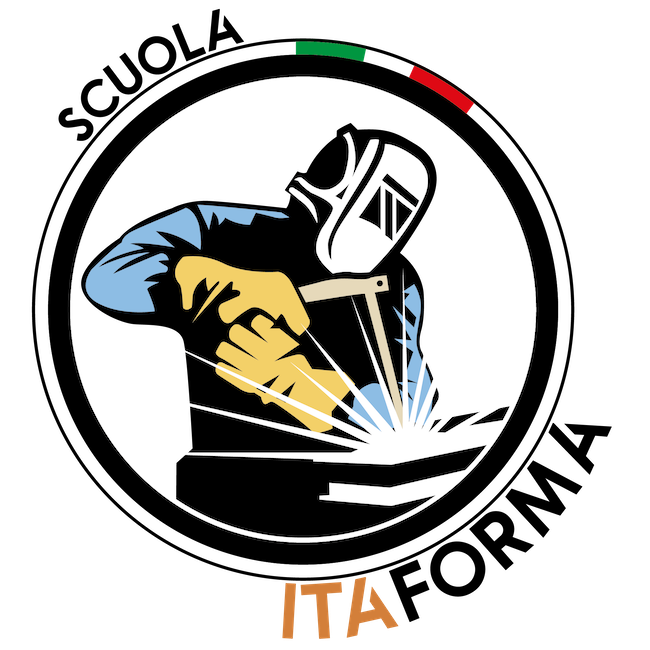1. Definition of the MIG/MAG Welding Process
MIG/MAG welding (Metal Inert Gas/Metal Active Gas) is a widely used welding process in modern industry. This technique relies on creating an electric arc between a filler electrode wire and the workpiece.
The arc generates enough heat to melt both the base metal and the electrode, forming a solid weld bead. The fusion occurs under the protection of a gas shield, either inert (argon, helium) for MIG welding or active (carbon dioxide, gas mixtures) for MAG welding. The gas shield prevents oxidation, ensuring the quality of the weld bead.
The main parameters influencing MIG/MAG welding include:
- Wire feed speed (welding intensity)
- Gas flow rate
- Electrode wire diameter
- Welding position (flat, vertical, etc.)
- Preparation of the workpieces
- Nature and thickness of the materials to be welded
2. Principle of MIG/MAG Welding
When the welder activates the trigger of the torch, it initiates the continuous feeding of the filler wire (hence the term “continuous wire welding”) while releasing the protective gas and closing the electrical circuit. The electric arc then forms between the electrode (wire) and the workpiece, generating sufficient heat to melt the materials. The filler metal, melted by the arc, combines with the base metal, creating a homogeneous weld. The process is performed under a gas shield that protects the molten area from oxidation, ensuring high-quality welds.
3. Advantages and Disadvantages of MIG/MAG Welding
Advantages:
- Cost-effective: MIG/MAG welding is particularly economical due to its fast welding speed and low material costs.
- High welding speed: This process allows for rapid welding, making it ideal for large-scale industrial production.
- High metal deposition rate: The MIG/MAG process deposits a significant amount of filler metal, improving overall process efficiency.
- Versatility in material thicknesses: MIG/MAG welding can be used for a wide range of material thicknesses.
- Welding in all positions: This process can be used for welding in various positions, including overhead and vertical.
- Aesthetic welds: The resulting weld bead is often of very high quality with minimal spatter, reducing the need for post-welding cleaning.
- Automation potential: MIG/MAG welding is commonly used in robotic applications for repetitive, high-precision welding tasks.
Disadvantages:
- Limited for thin materials: This process may not be ideal for very thin materials or delicate parts, as the heat generated can be too high.
- Sensitivity to environmental conditions: In outdoor environments, the protective gas can be disturbed by wind, affecting weld quality.
4. Arc Transfers in MIG/MAG Welding
The different types of arc transfers impact the quality of MIG/MAG welds. These transfer types are determined by the adjustments of intensity and voltage.
- Short Arc Transfer: In this mode, the arc periodically short circuits onto the workpiece, and the metal is deposited in small droplets. This mode is ideal for precise penetration welds, but the arc is unstable, leading to spatter.
- Globular Transfer: This intermediate mode between short arc and spray transfer generates larger droplets with less penetration and more spatter.
- Spray Arc Transfer: This mode creates stable fusion with fine droplets projected into the molten pool, providing deeper penetration and a higher deposition rate.
5. MIG/MAG Welding Unit Installation
Setting up a MIG/MAG welding station involves several key components:
- Wire spool and feed system: The wire spool is the fundamental element for continuous filler wire feeding.
- Feed system: The wire feeding is controlled by smooth or knurled rollers that regulate the wire speed.
- Torch: The torch transports both the filler wire and the protective gas to the welding area.
- Control unit: This unit allows for adjusting welding parameters such as wire speed, current intensity, and gas flow rate.
Ground clamp: Completes the electrical circuit necessary for the arc formation.
6. Industrial Applications of MIG/MAG Welding
MIG/MAG welding is used across a wide range of industries due to its flexibility and fast execution. Some of the most common applications include:
- Automotive Industry: MIG/MAG welding is extensively used for assembling chassis, body parts, and repairing metallic elements made of aluminum or steel.
- Metal Construction: This process is widely employed for welding heavy metal structures such as bridges, shipyards, industrial buildings, and pipeline installations.
- Aerospace Industry: The precision of MIG/MAG welding is highly valued for assembling aircraft and spacecraft components.
- Agricultural Equipment Manufacturing: MIG/MAG welding is used for manufacturing and repairing agricultural machinery, especially for steel structures.
- Machine Manufacturing: Due to its ability to weld various metals, MIG/MAG welding is ideal for assembling parts in complex industrial machinery.
7. The Importance of Practical Training to Obtain MIG/MAG Certification ISO 9606-1
Becoming a skilled MIG/MAG welder requires quality hands-on training. While theoretical knowledge is important for understanding the basic principles of welding, practical skills gained in the field are essential for mastering MIG/MAG welding. This welding technique requires a strong grasp of torch handling, precise welding parameter adjustments, and weld quality control.
To obtain a recognized professional certification, such as UNI ISO 9606-1, it is crucial to undergo practical training at an accredited center. This certification ensures that the welder has the necessary skills to execute high-quality welds according to international standards. It is often required in demanding industries such as aerospace, automotive, and metal construction.
Moreover, obtaining this certification increases the chances of securing a stable and well-paid job as a MIG/MAG welder, as it demonstrates a high level of technical competence and reliability—qualities highly sought after by employers.


